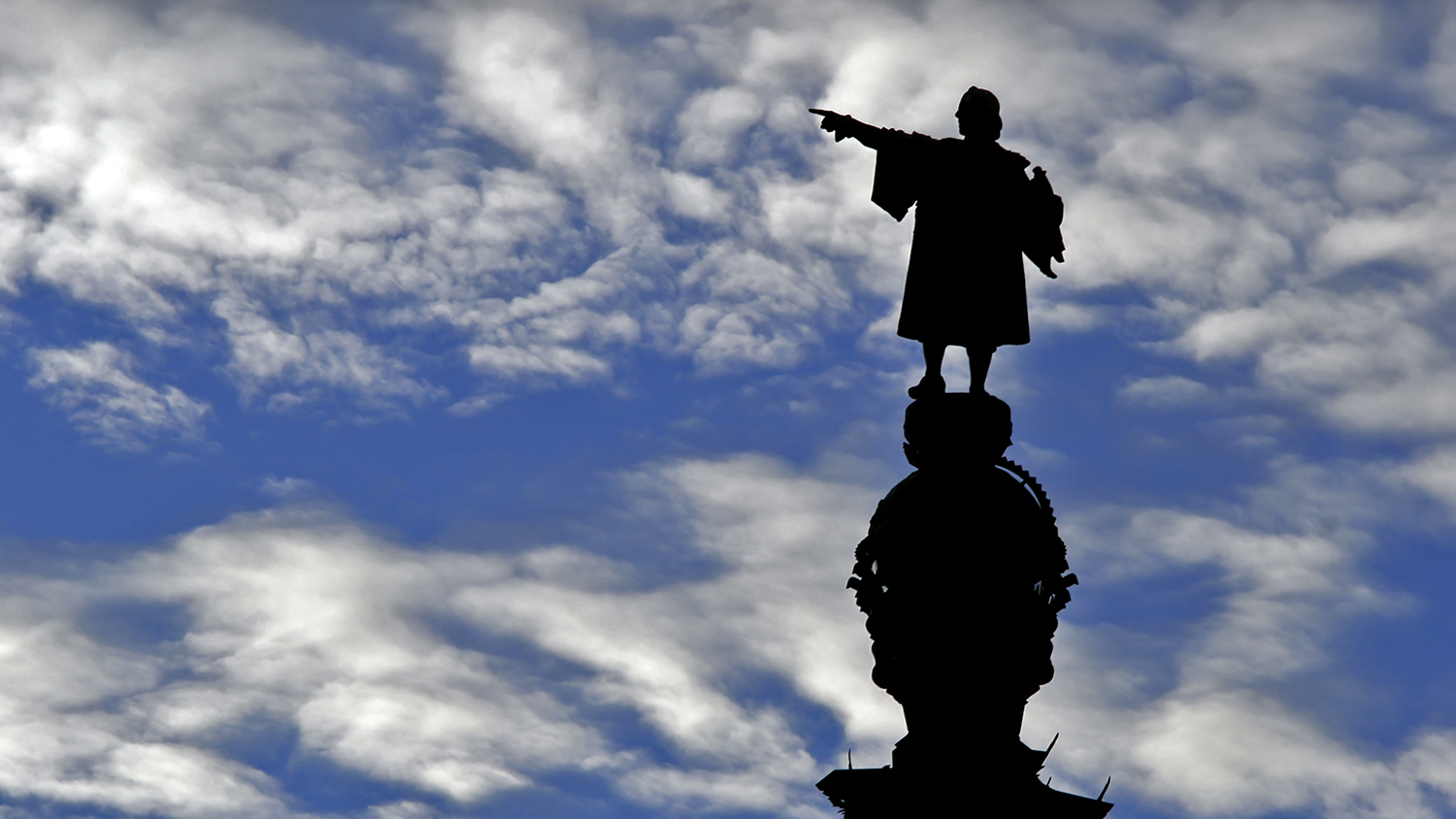You’re chatting with your friend, and she says, “Why are people so hung up on this Columbus Day thing? It’s just about this Italian guy coming to America!”
Well, what can you say? Here’s what you can say — some of it, anyway:
After Christopher Columbus stumbled upon the island we know as Haiti 523 years ago, he wrote of the Taíno people who inhabited it, “They never refuse anything that is asked for. They even offer it themselves, and show so much love that they would give their very hearts.”
It was this perceived generosity and goodwill that Columbus thought would make it easier to seize the giant island, with its “fine, large, flowing rivers” and forests “full of trees of endless varieties, so high that they seem to touch the sky.” Years later, the Taíno would be reduced to a tiny fraction of their population of approximately 300,000 — and Haiti would lose 98 percent of those trees Columbus coveted.
There was nothing trivial about Columbus’ violent destruction of Taíno people. While the sailor and his crew are sometimes lumped in with all the other conquest-crazy Europeans of their era, their particular cruelty can’t be so easily exonerated and shouldn’t be ignored.
Natives were regularly whipped for what Columbus considered minor offenses — but stealing a vegetable or animal could result in cutting off a Taíno’s nose, ear, or hand; the offender was sometimes forced to walk around with their severed body part in shame. Columbus took and gifted Taíno women to his crewmen, who would violently beat and rape them. Pregnant Taíno women who were taken captive gave birth to babies who were sometimes thrown to hungry dogs. Columbus established a business in the sale of 9- and 10-year-old Taíno girls for sexual slavery. He also kidnapped and enslaved Taínos themselves — personally initiating the transatlantic slave trade in his voyage back to Europe.
In short, Columbus was a murderous, enslaving, sexual-abusing, treacherous colonizer to the peoples he encountered in the Caribbean. Only two-thirds of the Taíno survived just four years after Columbus’ arrival; some were killed, others succumbed to diseases, and fully half of the dead killed themselves rather than live with his tyranny.
Columbus was also responsible for creating a system in which Taíno land was treated the way Taíno women were. Not that the Taíno didn’t resist: Columbus left behind 39 colonizers in the first European settlement in the Americas, which he called La Navidad, in present-day Haiti. When he returned from Spain several months later, he found that all the Europeans were dead. That didn’t stop him; Columbus’ practice of settling on other peoples’ lands in the Americas sparked the European imagination, and those lands would soon be the backbones of empires.
What followed was centuries of oppression — to the human beings who lived there, and to the land they lived on. Spain cleared land for massive tobacco plantations, beginning a long process of deforestation and soil erosion. After France came into possession of Haiti, it cleared even more land, and brought in enslaved Africans to cultivate sugar to satisfy European palates. The first place Europe settled in the Americas also became the first place that successfully revolted against it — but the destructive practice of monocropping for overseas consumption had already taken hold.
We shouldn’t forget that Columbus is responsible for launching an ecocide as well as a genocide. The wealth from resources like sugar, tobacco, and cotton ushered in the start of the Industrial Revolution, which began emitting carbon at an unprecedented record level.
Haiti remains the poorest country in the all of the Americas; the European Union region remains one of the wealthiest in the world. This isn’t because of some innate curse on Haiti. It’s because its peoples, their labor, their lands, and their resources have long been embezzled without reparation. The insidious nature of the colonization of the Americas, which started in Haiti, not only terrorized the people who lived there at the time; it also created a system that kept indigenous peoples in slavery or perpetual poverty, while Europe basked in wealth.
And that, you can tell your friend, is why so many of us roll our eyes at the idea of celebrating Columbus Day.
Editor’s Note: Because of an editing oversight, we originally posted this article without links and information about sources. In addition to the links now included, sources for the information in the article include: Atrocities, Massacres, and War Crimes: An Encyclopedia, by Alexander Mikaberidze; The Rediscovery of North America, by Barry Lopez; Blessed Unrest: How the Largest Social Movement in History Is Restoring Grace, Justice, and Beauty to the World, by Paul Hawken; The Spanish Frontier in North America, by David J. Weber; Columbus: The Four Voyages, 1492-1504, by Laurence Bergreen; A History of Jamaica from Its Discovery by Christopher Columbus to the Present Time, by William James Gardner.



